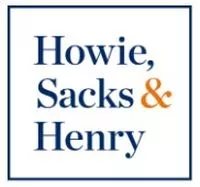According to statistics gathered by Safer Healthcare Now!, a national program supporting Canadian healthcare organizations to improve safety, more than one third of individuals 65 years or older experience a fall and the risk increases with the more risk factors an individual has. Fall-related injuries are known to be the leading cause of injury for seniors across Canada.
Unfortunately, there are an alarming number of falls that patients have from their hospital beds, causing significant injury. Often, elderly patients who are convalescing following surgery and are confused or disoriented due to medication, attempt to get out of bed to go to the washroom and fall, causing further damage or new injuries. Falls can have a devastating impact on an elderly person – especially when they are already recovering from a trauma, serving to further complicate their condition.
When a patient enters a hospital, it is because they are unwell. The hospital is somewhere they go for help, healing, and safety. Upon admission, an assessment of their risk of falling must be completed and repeated whenever they are moved to a new ward. Hospitals have a policy of least restraint, meaning that patients should, to the extent possible, be free to move around at their will, and restraints should only be put in place if necessary and to the extent necessary.
The 'falls risk assessment' may vary by hospital, but generally reviews factors including but not limited to the patient's medical history, conditions and medications, whether there is gait disturbance or mobility issues, whether there is any history of falls, whether the patient is experiencing dizziness or balance issues and whether they have a decreased level of alertness or are experiencing confusion. A score is attributed to their presentation. The patient is deemed to be at a low, moderate or high risk of falls.
If the patient is found to be at a high risk of falling, a plan must be designed and put in place. This 'falls prevention strategies' document must be completed a reasonable time following the falls risk assessment so that appropriate measures are put in place to ensure the safety of the patient. This is to be documented in the patient's chart. Universal falls prevention strategies for a patient at high risk of falling include having the hospital bed in the lowest position, 3 of 4 bedrails erected, a call bell within reach, a "Stop And Check" sign on the door, and ensuring that the pathway to the bathroom is free of clutter. Tailored fall prevention strategies may be appropriate on a case-by-case basis, and can include scheduled toileting, purposeful rounding (interacting with the patient regularly to see if they require assistance) and activating bed alarms (where available). All too often, the prevention strategies are not put in place, thereby increasing the risk of falling and serious injury.
If a high risk patient falls in hospital, a 'fall huddle' must take place within an hour of the fall to discuss what occurred, whether the prevention strategies were in place, the cause of fall, whether there were any witnesses, what if any injuries resulted, and what steps are being taken to address the injuries. Unfortunately, in many cases, this is "too little too late" for the patient, but not too late for the patient or family to pursue legal recourse.
The content of this article is intended to provide a general guide to the subject matter. Specialist advice should be sought about your specific circumstances.



